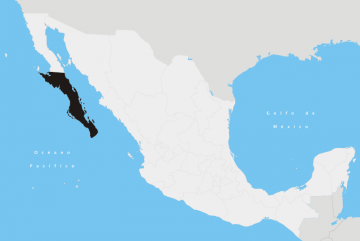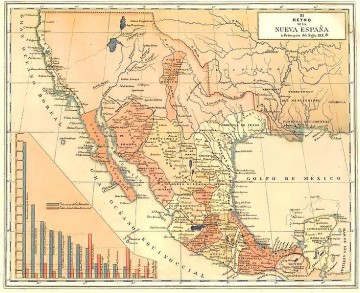 From September 5 to 15, 2013, Mexico Fest 2013 presents Baja California Sur Artifacts, an art exhibition, located at the Irving K. Barber Learning Centre’s second floor foyer. Baja California Sur (Spanish pronunciation: [ˈbaxa kaliˈfornja sur], lit. “Lower California South”), became state of Mexico in 1974. The second smallest Mexican state by population and the thirty-first admitted, the area was known as the South Territory of Baja California. The area of Baja California Sur is approximately 73,475 km2 (28,369 sq mi), or 3.57% of the land mass of Mexico and occupies the southern half of the Baja California peninsula. It is bordered to the north by the state of Baja California, to the west by the Pacific Ocean, and to the east by the Gulf of California, also known as the “Sea of Cortés,” Baja California Sur has maritime borders with Sonora and Sinaloa to the east across the Gulf of California.
From September 5 to 15, 2013, Mexico Fest 2013 presents Baja California Sur Artifacts, an art exhibition, located at the Irving K. Barber Learning Centre’s second floor foyer. Baja California Sur (Spanish pronunciation: [ˈbaxa kaliˈfornja sur], lit. “Lower California South”), became state of Mexico in 1974. The second smallest Mexican state by population and the thirty-first admitted, the area was known as the South Territory of Baja California. The area of Baja California Sur is approximately 73,475 km2 (28,369 sq mi), or 3.57% of the land mass of Mexico and occupies the southern half of the Baja California peninsula. It is bordered to the north by the state of Baja California, to the west by the Pacific Ocean, and to the east by the Gulf of California, also known as the “Sea of Cortés,” Baja California Sur has maritime borders with Sonora and Sinaloa to the east across the Gulf of California.
Baja California Sur is subdivided into five municipalities, including:
- Mulegé Municipality
- Comondú Municipality
- Loreto Municipality
- La Paz Municipality
- Los Cabos Municipality
 The state includes Loreto, the historic first capital of all three Californias (Baja California Sur, Baja California, and California), the town of Santa Rosalía which is the site of a historic church designed by Gustave Eiffel. The smoke stack of the silver smelters in El Triunfo, Baja California Sur was designed by Gustave Eiffel. Eiffel never visited Baja California Sur, rather his early architectural works were sold as ‘cookie cutter’ designs and can be seen in hundreds of locations around the world. Although the silver industry ended full scale production in the 1950s the stack and ruins of the silver industry remain as a significant landmark today.
The state includes Loreto, the historic first capital of all three Californias (Baja California Sur, Baja California, and California), the town of Santa Rosalía which is the site of a historic church designed by Gustave Eiffel. The smoke stack of the silver smelters in El Triunfo, Baja California Sur was designed by Gustave Eiffel. Eiffel never visited Baja California Sur, rather his early architectural works were sold as ‘cookie cutter’ designs and can be seen in hundreds of locations around the world. Although the silver industry ended full scale production in the 1950s the stack and ruins of the silver industry remain as a significant landmark today.
Baja California Sur is characterized by deserts, mountains and coastal flatlands. The climate is arid in most parts of the state, with the southernmost tip being tropical. Plants such as cardon, mezquite and wild-lettuce; animals including mountain lions; and other plants and wildlife characteristic of this ecosystem are found in the Central and Vizcaino Deserts of Baja California Sur.